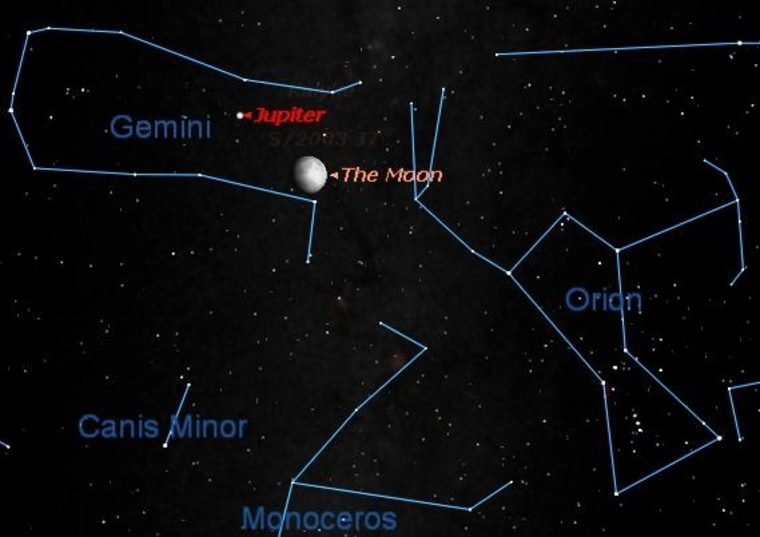If your skies are clear on Monday night, be sure to check out the southeast sky starting about an hour or so after sundown for an eye-catching sight: Jupiter and the moon shining together.
Weather permitting, stargazers can find the celestial pairing about halfway up in the southeastern evening sky.
You'll immediately see the moon, which will be at its waxing gibbous phase, en route to becoming a full moon for Valentine's Day on Friday. On Monday night, there's a very bright, silvery "star" shining steadily to the right or lower right of the moon. That's not really a star. It's the biggest planet in our solar system: Jupiter. [Video: Jupiter Reigns in February's Night Sky]
Jupiter reaches its highest point in the sky — transiting the meridian, as the astronomers would say — around 9:30 p.m. local time. It sets during the predawn hours, soon after 4 a.m. local time.
— Joe Rao, Space.com
Joe Rao serves as an instructor and guest lecturer at New York's Hayden Planetarium. He writes about astronomy for Natural History magazine, the Farmer's Almanac and other publications, and he is also an on-camera meteorologist for News 12 Westchester, N.Y.
This is a condensed version of a report from Space.com. Read the full report. Follow Space.com on Twitter, Facebook and Google+.
